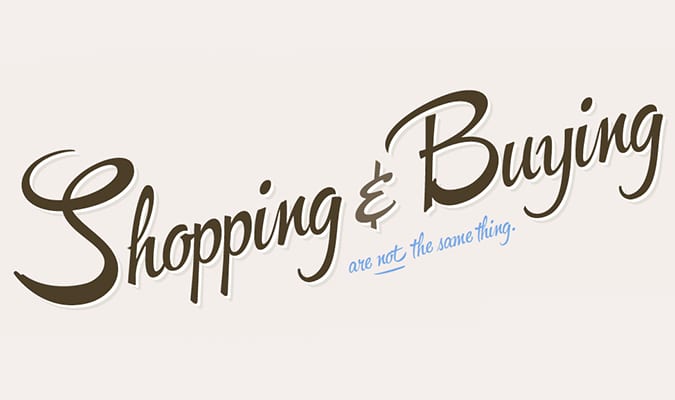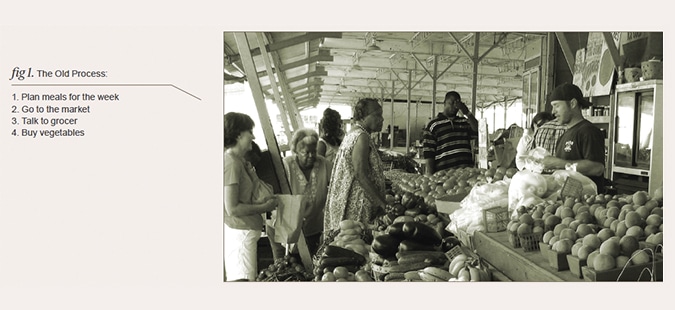Shopping & Buying are Not the Same Thing

I know it’s hard to imagine, but there was once a time when you couldn’t order a new pair of noise cancelling headphones, an amazing piece of art or even a car online. You had to actually get up, travel to the mall, boutique, or car dealership and go through the whole shopping experience. Sometimes, you were even persuaded or guided towards certain purchases based on…(gasp)…advertising.
You would see a TV spot that showed this fancy new car and talked about all of the amazing features it had. Flipping through a magazine or the newspaper, you’d find a great deal or that perfect dress you’ve been looking for and the information would be right there in front of you. Driving down the road you’d see a billboard showcasing that cool, new gadget you just had to have and it stuck with you. From there, you’d have to go to the store where you’d be greeted by a sales associate who would help you through the process. You could touch the product. You could feel it. You could take it for a test drive or try it on.
…Then you would buy it.
In the early days of the Internet, brands never really figured out how to translate that process to an online experience. Everyone and their brother jumped on the bandwagon and started peddling their products in a virtual space with one main focus:
Get to “Buy” as quickly as possible.
Sure, consumers were given access to a wider variety of products than they might normally have access to in their town or city. This was the shopping experience that helped guide and shape their overall brand perception and relationship. The nice sales clerk who would help you find the right size and perfect fitting shoe was replaced by next-day-delivery and free returns. The quirky girl at the bookstore was replaced by an online bookstore where all you had to do was type in the book title and bam, it’s at your door the next day, or instantly appears on your tablet.
So how do brands go about making it more about shopping and less about just buying? The answer might sound a little old school, but it definitely has its roots in the traditional marketing world, where the brand perception can be shaped outside of the store. Only now, TV spots, billboards and print ads are being replaced by social channels, web videos and creative online media buys.
Social channels like Facebook, Twitter, Pinterest and YouTube can be utilized to push richer content to consumers and help them experience the brand in a way they never could before online, and sometimes in ways they couldn’t if they went into the store. Bloggers can be utilized to promote products because they often serve as a voice of reason and have a strong influence over their audiences. Even something as simple as a well-placed, creative banner ad can drive people to a purchase destination.
Sure, it’s quicker. It’s more convenient. It gives you greater access to products and brands that you never had before, but the online shopping experience also stripped brands of the ability to have personal, human interaction to shape their perception of a brand. Products fly off the shelves based on price and not necessarily quality. When price becomes the deciding factor in a purchase for the entire market, all the brands competing for that sale lose.
That’s why brands must expand their shopping experience both on their website and even more importantly, off it. 
By creating a broader shopping experience, consumers are able to connect with brands and develop a relationship or loyalty based on their experience with them. They’ll be willing to shell out a few extra bucks over the competitor because they not only like the product, but they also like the company they’re buying from.
If brands want to compete in the amazingly crowded marketplace that is the World Wide Web, they have to stand out. They have to make an effort. They have to give their consumers and potential consumers a shopping experience that not only rivals the real life shopping experience, but also makes it even richer. Shopping certainly isn’t what it used to be, but that doesn’t mean it can’t be better than it ever was.